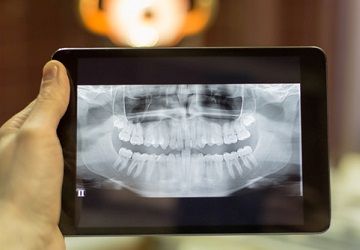The Costs and Benefits of a Digital Dental Workflow
How you can make use of technology in your dental practice to work smarter, not harder.

Ever wonder where the phrase “Work smarter, not harder” came from? It has actually been around longer than you might suspect.
Apparently, the phrase originated with Allan F. Mogensen, the creator of Work Simplification, back in the 1930s. So in essence, the thought process is nothing new. It just evolves over time.
Part of that evolution can be attributed to technology. Steven Spitz, DMD, founder and principal of Smileboston Cosmetic and Implant Dentistry, has embraced technology by way of integrating digital workflow into his practice.
“We are in the best profession ever,” Spitz says. “There’s so much money and so much time going into the different technologies to make our jobs easier, to make our jobs better, and to make them more fun.”
Not to mention, more profitable.
Personal Philosophy
Spitz says his personal philosophy is the same as the one coined by Mogensen nearly 90 years ago. He uses technology to accomplish the goal of that philosophy. Where digital workflow is concerned, that means removing all of the areas of inherent error due to the materials used. The result, he says, is better quality dentistry.
“If you think about impression material, first it expands and then it contracts,” Spitz explains. “And (the materials) have improved greatly over the years so they’re pretty accurate, but it’s not a hundred percent. Then we pour it into a stone, and the stone also expands and contracts. So immediately, you’ve got some error built in there. Once you go to a digital workflow, you’re eliminating all of those errors, because what you have is what you get. It’s a more precise medium as far as the quality.”
There are also considerable savings. Spitz points to the materials that no longer have to be purchased, as well as dental assistants’ time saved because they’re no longer standing chair-side taking impressions. Dental assistants can take the necessary scans, which frees up the dentist’s time.
“From a dentist standpoint, digital workflows, by far, are better,” he says. “They’re more controlled, they’re more accurate, and they’re cost effective. “And every day the technology keeps getting better and better.”
The Patient Perspective
Spitz believes that digital dentistry is also “fabulous” from the patient point of view. For example, being able to create a crown on the same day enables the patient to avoid multiple trips for the same procedure. And being able to show a patient his or her mouth on a large screen while discussing their diagnosis helps them see exactly what the dentist is explaining.
“The days of just saying you need treatment are over,” Spitz explains. “The days of asking a patient what they would like, and how they want to be treated, and presenting them options or opportunities for them to achieve those goals, what they want for themselves, are where today’s medicine is.”
The residual benefits are significant as well. Spitz says he regularly receives new patients who found his practice on social media. They’re attracted by the positive reviews, and the use of new technology. When patients are comfortable and happy with their experience, they’ll share it.
“I had a patient today who said, ‘I’m not going to see you until March? I’m going to miss coming here,’” Spitz says. “It’s like, who says that? It’s just that we’re able to build really nice relationships with patients because of their experiences.”
Ready for Change
Spitz says that one of the keys to successfully integrating digital dentistry into a practice is being willing and able to delegate. That means the dentist is not responsible for doing everything. Certainly, dentists want to oversee the processes and make sure all the right steps are being taken. But training staff to perform many of those tasks enables the dentist to be more productive.
“You need multiple people trained to do the same thing and to understand the technology,” he says. “That does take time, and it does take training to get everybody up to speed, or enough people up to speed so that you’re not stuck if somebody decides to move out of state, or if somebody gets sick.”
It’s also critical to step back and assess whether your practice is ready to step into a digital workflow. Spitz recalls that decision-making process when his practice was smaller.
“We eliminated the impression materials, we eliminated the steps of conventional dentistry, we were able to get into the digital world, but we didn’t go to that next level of making crowns in-house,” he explains. “You’ve got to be ready for change. With any technology, there’s a learning curve. You’ve got to be willing to give it the time to master the new technology in order to be successful.”